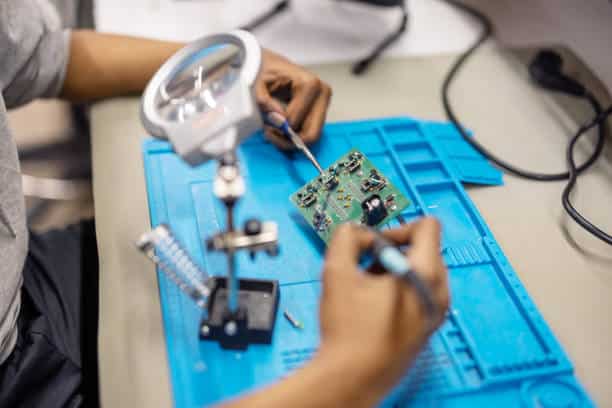Capacitors are an essential component of electronic devices. They store electrical energy and release it as needed, making them vital for many electrical circuits. However, like any component, capacitors can fail, causing malfunctions in your device.
Testing a capacitor is an important step in diagnosing any issues with your electronic device. This guide will walk you through how to test a capacitor in detail.
Table of contents
What is a Capacitor?
A capacitor is a two-terminal device that stores electrical energy in an electric field. It is made up of two metal plates separated by a dielectric material. The size of the plates and the distance between them determine the capacitance value, which is measured in Farads (F).
Why Test a Capacitor?
Capacitors can fail over time, leading to issues with your electronic device. Testing a capacitor can help diagnose the problem and ensure that it is functioning correctly. There are several methods to test a capacitor, including using a multimeter, an oscilloscope, or a capacitance meter.
Method 1: Using a Multimeter
A multimeter is a versatile tool that can measure voltage, current, and resistance. It can also test capacitors. Here’s how to test a capacitor using a multimeter:
Step 1: Set your multimeter to the capacitance setting. This setting is usually represented by the symbol “F.”
Step 2: Discharge the capacitor. To do this, connect a resistor between the two terminals of the capacitor. This will discharge any stored charge in the capacitor, making it safe to handle.
Step 3: Connect the multimeter leads to the capacitor terminals. The red lead should be connected to the positive terminal, and the black lead should be connected to the negative terminal.
Step 4: Read the capacitance value on the multimeter. This value should be within the range specified on the capacitor.
Method 2: Using an Oscilloscope
An oscilloscope is a tool that displays electrical signals as a waveform on a screen. It can also be used to test capacitors. Here’s how to test a capacitor using an oscilloscope:
Step 1: Connect the oscilloscope probe to the positive terminal of the capacitor.
Step 2: Connect a resistor between the negative terminal of the capacitor and the ground.
Step 3: Connect the oscilloscope probe to the negative terminal of the capacitor through the resistor.
Step 4: Observe the waveform on the oscilloscope. The waveform should start at zero and slowly rise to the maximum voltage of the waveform.
Method 3: Using a Capacitance Meter
A capacitance meter is a tool specifically designed to measure capacitance values. Here’s how to test a capacitor using a capacitance meter:
Step 1: Set your capacitance meter to the capacitance setting.
Step 2: Connect the meter leads to the capacitor terminals. The red lead should be connected to the positive terminal, and the black lead should be connected to the negative terminal.
Step 3: Read the capacitance value on the meter. This value should be within the range specified on the capacitor.
Conclusion
Testing a capacitor is an important step in diagnosing any issues with your electronic device. A faulty capacitor can cause malfunctions, so it’s essential to ensure that it’s functioning correctly. There are several methods to test a capacitor, including using a multimeter, an oscilloscope, or a capacitance meter.
Discover More
- How to Cancel FuboTV: Streamlined Guide for Subscription Freedom
- How Long Do Mice Live: Rodent Life Cycle Understanding
- How Long Does a Soccer Game Last: Sports Duration Understanding
- How to Reset Chromecast: Streaming Device Management
- How to Clean Crocs: Footwear Maintenance Method






